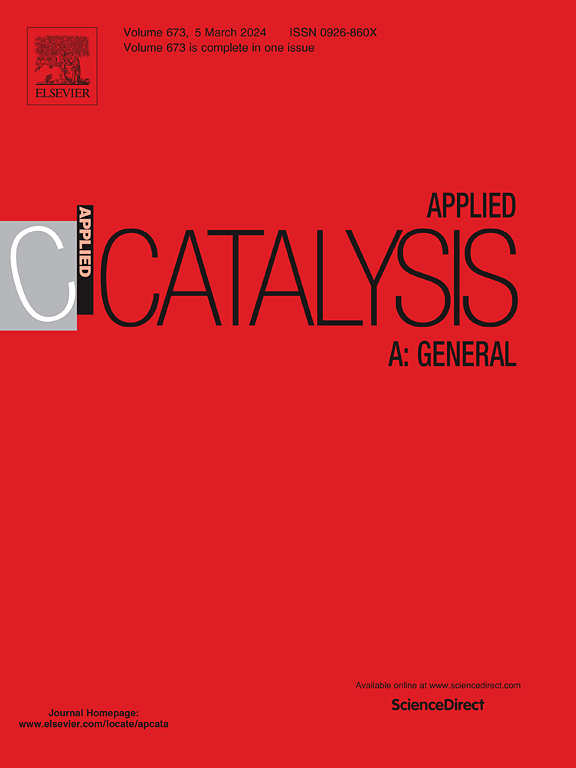ZnO负载在锌尖晶石结构上,当与酸性CHA催化剂结合时,可以将CO2直接转化为烯烃
IF 4.7
2区 化学
Q2 CHEMISTRY, PHYSICAL
引用次数: 0
摘要
双功能氧化物-零型催化体系可以将CO2转化为轻质烯烃,但转化率较低。了解氧化甲醇合成的活性位点以及在不同操作条件下与零型的协同作用可以指导未来的改进。本文研究了H-SAPO-34与ZnAl2O4或ZnGa2O4复合的催化剂。结果表明,金属氧化物的甲醇合成活性与锌含量有关;当Zn含量超过化学计量水平时,活性急剧增加,对于M = Al或Ga, Zn/(Zn + M) >; 0.33。这产生了支持的表面氧化锌畴,选择性地产生甲醇和二甲醚。将这两种zn尖晶石催化剂与H-SAPO-34结合,在烃产物中显示出较低的烯烃选择性>; 70碳摩尔%,但CO2到烃的转化率较低,为~ 3 %。共投CO显著提高了CO2对烃的转化率,但不影响烯烃的选择性。本文章由计算机程序翻译,如有差异,请以英文原文为准。
ZnO supported on zinc spinel structures enabling the direct conversion of CO2 to olefins when combined with acidic CHA catalysts
Bi-functional oxide-zeotype catalytic systems can convert CO2 to light olefins, but at low conversions. Knowledge of the active sites for methanol synthesis over the oxide and the synergy with the zeotype at different operating conditions can guide future improvements. Here we investigate catalysts based on H-SAPO-34 combined with either ZnAl2O4 or ZnGa2O4. We show that the methanol synthesis activity of the metal oxide is dependent on the Zn-content; the activity increases dramatically when Zn content exceeds the stoichiometric level, Zn/(Zn + M) > 0.33 for M = Al or Ga. This creates supported surface ZnO domains, which selectively produce methanol and DME. Combining either of the Zn-spinel catalysts with H-SAPO-34 showed a light olefin selectivity > 70 carbon mol% among the hydrocarbon products, but at a low CO2 to hydrocarbon conversion of ∼3 %. Co-feeding CO increased the CO2 to hydrocarbon conversion significantly without affecting the olefin selectivity.
求助全文
通过发布文献求助,成功后即可免费获取论文全文。
去求助
来源期刊

Applied Catalysis A: General
化学-环境科学
CiteScore
9.00
自引率
5.50%
发文量
415
审稿时长
24 days
期刊介绍:
Applied Catalysis A: General publishes original papers on all aspects of catalysis of basic and practical interest to chemical scientists in both industrial and academic fields, with an emphasis onnew understanding of catalysts and catalytic reactions, new catalytic materials, new techniques, and new processes, especially those that have potential practical implications.
Papers that report results of a thorough study or optimization of systems or processes that are well understood, widely studied, or minor variations of known ones are discouraged. Authors should include statements in a separate section "Justification for Publication" of how the manuscript fits the scope of the journal in the cover letter to the editors. Submissions without such justification will be rejected without review.
 求助内容:
求助内容: 应助结果提醒方式:
应助结果提醒方式:


